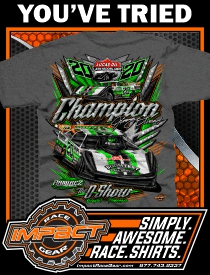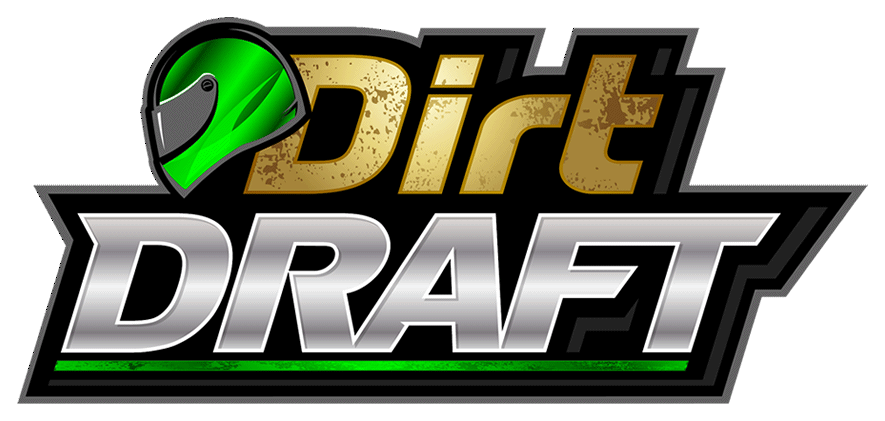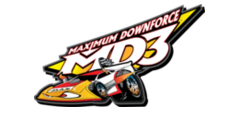
Davenport Speedway
Less-traveled roads now Summer Nationals lore
By Todd Turner
DirtonDirt.com managing editorDAVENPORT, Iowa (June 21) — Mark Voigt will never forget his team’s DIRTcar Summer Nationals journey to Cedar Lake Speedway a dozen or more years ago. The overnight journey came after a late night of racing in Kankakee, Ill., so Voigt and another crew member caught some shut-eye while crewman Mark Rottler steered the team’s hauler.
At sunrise, Rottler summoned Voigt to the front of the truck to help with directions to the New Richmond, Wis., track. | Complete Summer Nationals Coverage
“I finally get up and I hear him yelling at me to wake up,” Voigt recalled. “He goes, ‘Man, I can’t find this road. I can’t find this road.’ And I’m like, it’s got to be here.”
“We drove and drove and pretty soon we come up, I’m looking at the road signs, and I go, ’Dude, you’re in the wrong state. We’re not even in the right state. You crossed the (Mississippi) river.”
Realizing they’d gone clear through Wisconsin and were still heading west in Minnesota, “we had to turn around,” the Marine, Ill., driver said, laughing as he recalled the story. “He was in the wrong state, looking for the road. It was like an hour round-trip goofup before I caught it. It was funny as can be.”
Such is the misadventures of the DIRTcar Summer Nationals, where the day-after-day racing, stiff competition and long hours are bad enough without throwing in the difficulties of steering lengthy race transporters to out-of-the-way racetracks in the Midwest and beyond. And while the days of atlases and the National Speedway Directory are mostly in the past, GPS directions can still trip up touring racers who find closed roads, obstacles and more in seeking a tiny bullring in the middle of nowhere.
“I betcha there’s nobody here that hasn’t been lost,” Voigt said, sweeping his hand over the Davenport Speedway pits Wednesday before the tour’s seventh round of action. “That’s part of the whole Summer Nationals experience.”
Jason Feger, the current series points leader and 2010 champion, had his own experience with Cedar Lake, where roads using the letter C (or double-C or triple-CCC) could be confusing back in the early days of GPS.
“Obviously before the smartphones it was pretty adventurous. I know my first time going to Cedar Lake I felt like we must’ve drove around there forever,” Bloomington, Ill.’s Feger said. “That was really confusing and we definitely got lost. We’re on like flip phones trying to load maps and it wasn’t working. That was bad.”
Hall of Fame crew member Steve Norris, who has worked with Billy Moyer virtually his entire career, remembers the pre-GPS days well while the Batesville, Ark., driver was racking up many of his 100 career Summer Nationals victories.
“We used to use the racing directory like a Bible,” Norris said. “I mean, it would tell you what roads to take what exit to get off of with the interstate, which direction to go and usually even had an address.”
Norris cautioned, though, you had to be sure the address listed was the track itself and not a random racetrack office or even a promoter’s home.
“So you had to be careful,” Norris said. “Yeah, things have changed definitely over the years, that’s for sure.”
Many dirt tracks on the Summer Nationals and other tours are in tiny towns, but even in a tiny burg — or if the track is several miles from that locale — it wasn’t always easy to find a racetrack.
“The racetrack’s not on the map, but the town is, and they’ll say, well, it’s close to this town. Yeah, if it’s close to the town, yeah, that’s cool, but it’s not right off the highway where you can see. Then you’re lost unless you know somebody that’s been there before,” Norris said. “You know, you take this (road) and half of it’s gravel, and you take this (road) and there’s a low bridge, so you gotta go around this way.”
While Moyer’s Tim Lance-owned team now has the convenience of GPS, even finding Tuesday’s track in Moberly, Mo., was a bit tricky, Norris said.
“It’s been a while since we’ve been to Moberly and we actually called a friend about the place,” Norris said. “I was looking on the west side of whatever it was, (U.S.) 63 there at Moberly, and it’s on the east side. Once I figured out it was on the east side, then I found it. But back in the day when you used a map all the time, the racetracks aren’t on the map. And if there’s a town there, that’s fine, but somebody needs to draw a circle about where the racetrack is.”
Then there’s the cases of going to the wrong locale altogether. It wasn’t on the Summer Nationals, but Norris recalls a story from a crew member for late Tennessee driver Scott Sexton about the team’s attempt to run in the Topless 100 at Batesville Motor Speedway in Arkansas. There was on problem.
“They come all the way across Tennessee and they ended up in Batesville, Miss., instead of Batesville, Ark.,” Norris said.
A similar thing once happened to longtime Summer Nationals director Sam Driggers for a different DIRTcar-sanctioned event. He drove all the way to Salina, Okla., checked into his hotel, then headed out to Salina Highbanks Speedway where he found not a single race car. It took him a moment to realize he was actually supposed to be in Salina (Kan.) Speedway — more than 300 miles to the northwest across the Oklahoma-Kansas border — for the night’s action.
Summer Nationals race director Erik Grigsby said it’s not the only time Driggers has been lost en route to the track, and Grigsby chalks it up primarily to inattention.
While Driggers is behind the wheel, “he’s usually looking at his iPad, smoking a cigarette, drinking a Coke, listening to a CD and whatever else he does,” Grigsby said with a big smile.
Driggers did, however, once use that cigarette-holding hand to provide a direction-pointing assist to Billy Moyer Jr. when, as a young driver, the Batesville, Ill., racer was trying to figure out which road was the entrance to Spoon River Speedway on the highway between Banner and Canton, Ill., for a Summer Nationals event.
“I’m like, ‘Where the hell am I?’ I’m trying to figure it out but I’m turned around and I take a left and a veer off and as I’m like about to circle back around to go back where I came from,” the younger Moyer said. “Sam was driving by with his cigarette smoking and pointing this way. So I just circled around. I was going the right way but I missed it. He drove by smoking, pointing (the right direction) and I turned around and went right back where to go.”
It always helps to have a Summer Nationals veteran show you the way to the racetrack, which is why you sometimes see teams traveling together. As a matter of fact, after Moberly’s event, Feger was heading for Davenport’s race when he spotted the hauler of Texas driver Morgan Bagley, a series rookie.
“I passed MoBags and I was going faster and he was on the way (to Davenport). He sped up and got on my bumper and he pulled it right behind me, and he was like ‘I’ve never been there before.’ It is definitely easier to follow somebody,” Feger said. “There are some shortcuts here and there and we know most of them and the easy ways to get into places where not to go and where to go.”
Ah yes, “where not to go” covers a range of problems including low overpasses, gravel roads, farm roads or difficult to navigate railroad tracks.
Feger couldn’t remember which team it was en route to a Summer Nationals event at Clayhill Motorsports Park — he thought it was Illinois driver Wes Steidinger — whose hauler got high-centered on a steep railroad crossing in the tiny town of Atwood, Tenn.
And Moyer Jr. recalls the narrow roads and treacherous ditches near Paducah International Raceway where more than one driver jackknifed haulers or worse trying to get to and from the 3/8-mile western Kentucky oval a few miles south of I-24.
“Paducah’s got that big old hill, that’s where (former Illinois driver Randy) Korte turned his over that one time,” Moyer Jr. said. “He got off on a side of the road going back into (the track in) Paducah in that neighborhood. He laid it on its side and, hell, I think he almost won that night.”
To double-check routes, Moyer Jr., Feger and others sometimes look at online GPS maps using the satellite view to get a closer look at the path they plan on taking.
“I’ll zoom in on the road and see what it looks like and you can usually tell if it’s a halfway good road or not,” Feger said. “I’ve been to most of these places, so we don’t really hardly have problems anymore, but definitely before the smartphone, it was definitely adventurous.”
Moyer Jr. said the satellite view is what he uses “to make damn sure I’m going in the right spot,” he said.
Second-year Summer Nationals driver Mick Quin of Waimarama, New Zealand, has the extra challenge of driving on the “wrong” side of the road when he’s stateside, but he and his team manage by checking online maps — and he keeps a trusty atlas on hand, too, using it to document his team’s trips by using a yellow highlighting marker to label each track they’re visiting.
But Quin and others often discover online maps might come with their own share of problems.
“A good example is coming (to Davenport) today,” Quin said. “It shows you to come in the wrong entrance, and if you haven’t been here before, you don’t know. So when you’re dragging a 48-foot trailer, so then you got to get back out on the main road,” a task they accomplished, but not without some annoyance.
The advertised distance and route to racetracks in the average passenger car is different than for oversized race car haulers, Feger reminded.
“You gotta know what you’re doing because it’ll take you off the beaten path. It’s not so bad in a car, but in one of these haulers it makes a big difference,” Feger said. “I’m always busting Sam’s balls because he just punches in (with Google maps) and says it’s three and a half hours. Well, it is when he’s running at 80 in his car, but it’s definitely not three and a half hours with these haulers.
“It just takes a lot of time when you got to start and stop and go through small towns. It’s definitely different. You haven’t done it, you don’t really understand. It takes us a lot longer to get from Point A to Point B, but obviously we prefer to stay on the interstates or the four-lane stuff, but it’s not so bad anymore with smartphones. But you still got to just kind of watch.”
Feger once ran into problems when his team didn’t go into 34 Raceway in West Burlington, Iowa, by the proper path. Discovering a too-low overpass between his hauler and the racetrack, but they were able to squeeze underneath because Feger could adjust the air suspension, lowering the trailer 3 inches to give him a little extra clearance.
“I had my guy climb a ladder as we’re (under) a low bridge,” Feger said of the close call. “He was climbing the ladder to make sure we made it under there. We had to dump the air in the trailer. We got through there, but there wasn’t much room to spare.”
While it wasn’t during the Summer Nationals, Gary Winger, crew chief for his son Ashton, ran into his own problems with an overpass in Wisconsin that was about 18 inches too low for the team’s transporter to clear.
“We left Jimmy Mars’s shop (in Menomonie) and was going to Superior and got off a four-lane road and I was following the GPS on my phone,” Winger said. “It took me down this road and about the time we got running 65 or 70 mph, we see a sign that says 12-foot bridge. Once we got woahed down, there wasn’t nowhere to turn around. We backed up right at a mile and a half … and it probably took us about 20 minutes to do that.
“We got back on the four-lane we was on and finally your GPS will reroute you a different way. Then we got to the racetrack, and and everybody’s like ‘Aw, you can go that way, everybody does that.’ Nobody let us know that before. Mars and them were laughing at me and they knew what I did. They could’ve gave me a heads up.”
Sadly, Winger’s tale of woe doesn’t end there.
“The worst part about it is, they said when you leave the racetrack, go left, go down to this church make a left, and your GPS will take over,” Winger said. “I did that — and it took me the opposite side of that same exact bridge.”
Voigt, whose team detoured through Minnesota en route from Kankakee to Cedar Lake, is skeptical of overusing the GPS directions. During this year’s Summer Nationals, Voigt is traveling with fellow racer Doug Tye of Collinsville, Ill., and he’s leery of where Tye’s GPS suggestions have taken the teams.
“I think his GPS is set on Goat Path,” Voigt said. “Because every once in a while we’re out in the middle of cornfields on roads without lines and I’m like, ‘Dude, we got to have roads with lines. These trucks are too big for these roads with no lines.’ ”
On their way from Fairbury, Ill., to Sycamore Speedway in Maple Park, Ill., “I guess there’s a road up through the country that’s 6 inches closer than the interstate and we’re out there going around through these roads. And I’m like, ‘Man, I don’t think all these race haulers are going down these roads.’ So it happens to us frequently. I don’t know, my wife’s a GPSer and Doug’s a GPSer and I’m old school.
“We get to where we’re going, and I’m like, “Dude, I’m buying you a Rand McNally.’ I’m old school. I use the map. I got an atlas that I keep in my truck and I get it out and I find the roads I want. I don’t care if it’s 20 miles farther, but I ride on good roads. But my wife and Doug, they're legitimate GPSers. I’ll tell you what, if you ain’t careful, them babies take you down a goat path.”

















































